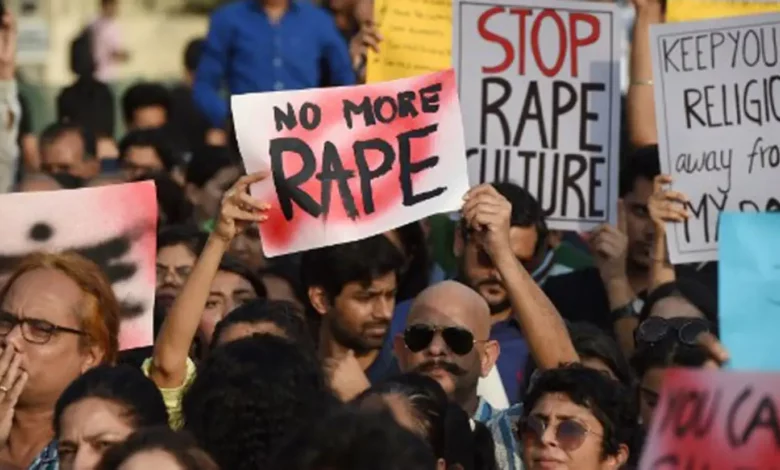
Indian authorities struggle to cope with the staggering volumes of crimes against women each year; over 31,000 rapes alone have been reported to authorities from various regions across the country in 2021, as per the National Crime Records Bureau (NCRB).
The figures demonstrate the pressing need for a holistic policymaking process comprising legal reform, policy reorientation, and social reform being waged much deeper, as the root cause is undoubtedly the obsolete and biased societal mindset.
Key India Rape Statistics
- 31,677 rape cases reported in 2021.
- Rajasthan, Uttar Pradesh, and Madhya Pradesh account for nearly half of all rape cases.
- 89,097 cases of kidnapping and abduction of women and girls.
- 120,201 cases of cruelty by husbands and relatives
Persistently High Numbers
The reported cases of rape in 2021 were 31,677, which was a little lower than the cases reported in 2020, i.e. 32,033. Still, these numbers are alarmingly high. Professionals are concerned about underreporting that might account for the real numbers since the sexual offences victims often are afraid to report the cases, and human witnesses lack belief in justice systems in delivering justice and safeguarding the victims.
Geographic Concentration
70% of all rapes which were reported took place in just 3 states. Three states with 18522 cases of reported rape are Rajasthan (6337), Uttar Pradesh (5852), and Madhya Pradesh (2710). This geographic pattern signals the necessity of policy measures geared towards affected states, where target intervention and reform can be duly administered via appropriate techniques like enhancing the response of law enforcement, launching public awareness campaigns, and facilitating victims with support services.
Known Perpetrators
Unbelievably, 96.03% of the rape reports in India come from the relationships. The foreknowledge relates to the culprit. This highlights the fact that women are always at the wrong end of the sharp reality that is sexual violence at the hands of those who are closest to them – the family and the neighbours who find a loophole to use their closeness to do it.
It is a wake-up call not only to the police, political leaders or the government but to all the citizens of the Country to realize that domestic violence and friend rape is embedded in every sitting of Indian society.
Other Gender Crimes
The data of NCRB clearly shows 89,097 cases of kidnapped/usbhaaniji in the year 2021. Of cruelty practised by husband, own mother and near relatives, there were as many as 120,201 cases. From a cleaner to the topmost post holders, these statistics clearly express the layers of violence and crimes that Indian women are still victims of not only within their homes but also within their communities.
The Tech Dimension of India’s Sexting Boom
The rapid rise of smartphone ownership and internet access in India over the past decade has played a significant role in the growth of sexting and other digital sexual behaviours.
Increased accessibility to affordable mobile devices, coupled with the expansion of 4G and now 5G networks, has made it easier for people across India to engage in sexting and the exchange of explicit digital content. Messaging apps, social media platforms, and a range of specialized apps have provided new avenues for this type of activity.
Furthermore, the COVID-19 pandemic and ensuing lockdowns led to a surge in online interactions, with many Indians turning to digital tools for social connection and intimacy when in-person contact was restricted. This likely accelerated the uptake of sexting and other digital sexual practices.
While technology has enabled greater sexual expression, it has also introduced new risks and challenges. The lack of digital literacy, especially among younger users, has left many vulnerable to non-consensual sharing of intimate imagery, sextortion, and other technology-facilitated abuse. Addressing these emerging threats will be crucial as India grapples with the societal implications of the country’s growing sexting culture.
Conclusion
The report on the 2021 National Crime Records Bureau data unveiled the depth of the pervasive problem of sexual violence against women in India. For the women in India, multiple-angled strategies must be adopted, including enhancing the law-enforcement response, citizens’ awareness about digital literacy.
The provision of complete services of support to the victims as well as, most significantly, the alteration of the mind frames of the public that make gender-based violence possible are necessary to enable an effective policy for the constitutionally guaranteed equality, security and dignity of women.



